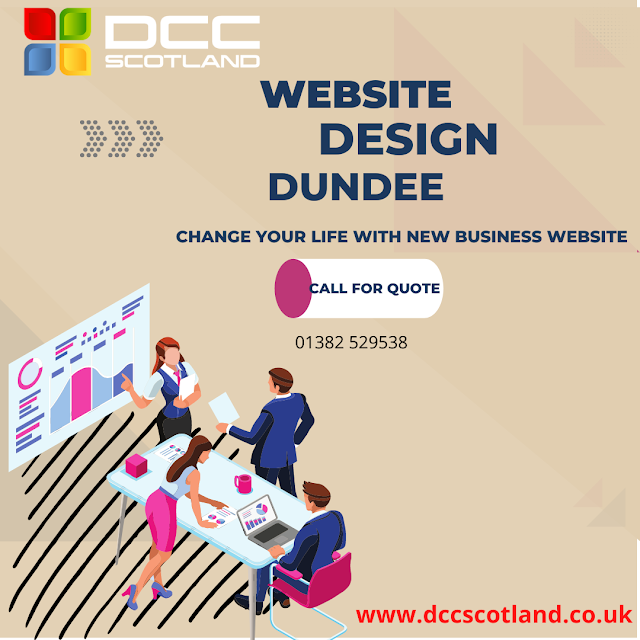The Importance of Website Design in Scotland
A professionally designed website projects a company’s professionalism and credibility. It must also meet user expectations and convey key business goals.
A fast-loading site ensures visitor satisfaction and improves search engine rankings. Website designers should enable caching, optimize images, and eliminate rendering-blocking resources. Using contrasting colors and strategically placing CTAs encourage conversions.
Responsive design
Website responsiveness is an essential part of your web design. It enables you to create a single site that adapts to the devices of your users and provides a consistent user experience across all platforms. This can improve site performance, user engagement, and sales. It also allows you to reach a broader audience through mobile devices.
Responsive web designs use CSS to resize, hide, or move content in order to make it fit on any screen. This method makes it easier to manage a website on multiple devices, and can save time and money for both developers and designers. It also helps ensure that the website is optimized for mobile users, resulting in better conversion rates.Glenrothes airport transfers
One example of responsive design is Harry Roberts’s blog, which uses media queries to modify the layout for different viewport sizes. For example, the h1 element uses an illustration that is proportionally scaled to the width of the display. This means that it will float to the top of the screen on desktop, tablet, and iPhone views.airport transfers Glenrothes
A responsive website is an important part of your digital marketing strategy. It can increase user engagement, build brand recognition, and establish trust with consumers. In addition, it can help you rank higher in search engine results. Using a responsive website will also save you time, because it is less expensive to maintain than a separate site for each device.
Mobile-first
When it comes to websites, mobile-first web design is the way of the future. This is because most users access the internet on their phones, and they are more likely to stick with brands that provide a smooth, easy-to-use experience. A mobile-friendly website can also help boost your search engine rankings, as Google prioritizes mobile-friendly sites in its algorithm.
This design strategy begins with designing a site for mobile devices, then making changes to accommodate desktop users. This is a better approach than designing a website first for desktop and then scaling it down to mobile, which can cause problems with the layout and navigation. It also allows you to avoid graceful degradation as mobile technology evolves, which is critical for long-term success.
A mobile-first approach can be difficult, but it is worth it for the benefits that it offers. For example, users spend on average 5 hours per day using mobile apps and browsing the internet. They want to find what they are looking for quickly, so a website that is difficult to use will be ignored.
This is why it is important to have a clear hierarchy of information on each page of your website. This includes a clear menu, contact details, operating hours, location information, and more. This will give visitors the right information they need without distracting them with unnecessary or redundant data. Also, make sure to use a clean design and large fonts. Studies have shown that 57% of people will not recommend a business that has a poorly designed mobile website.
Video content
Video is a great way to connect with your audience. It can help tell your story in a more engaging way and build trust between you and your visitors. It can also increase the reach of your website.
Using videos on your homepage can be an effective way to capture visitors’ attention and drive traffic to your site. However, it’s important to keep the length of your video short. Research by HubSpot shows that most people prefer marketing videos that are one to three minutes long.
If you’re a creative professional, video content is a good way to showcase your work and add personality to your website. Many creatives use a video gallery as a central element of their websites to showcase their creative work and tell a compelling story. This helps to make their websites more engaging and allows them to stand out from competitors.
When incorporating a video on your website, it’s important to ensure that the video fits well with the design aesthetic. It should be a focal point of the page and not detract from the overall look of your site.
Video is a popular choice for websites, but some companies don’t have the budget or resources to create a video. Fortunately, there are other ways to incorporate video into your website without breaking the bank. A video library is a great option, as it can include vlogs, tutorials, or instructions. It can even feature testimonials to give your website a more personal touch.
Personalization
A personalized experience is a key component of an effective website design. It drives conversions and engages visitors. Several personalization methods can be employed, including navigational personalization, predictive recommendation, and contextual messaging. Each has its own unique benefits. However, these techniques should be used in conjunction to ensure optimal results.
The first step in website personalization is gaining a better understanding of your target audience. This is done by collecting consumer data that identifies their interests and buying habits. This information is collected through cookies, which are small text files that store browsing history and other site-related data. This information is essential to the process of website personalization, as it helps you deliver the right content and product recommendations.
To avoid interrupting users, website designers must take a seamless approach to personalization. Unlike the more intrusive approach, a seamless experience is one that transitions between personalized and non-personalized sections of the website. This is achieved by incorporating user-friendly features like a favorite lists, a hardware registry, and contextually relevant messages.
Other personalization elements that increase visitor engagement include easy navigation, video content, and strong calls to action. Optimizing a website for mobile devices also enhances user experience by reducing loading times and removing elements that aren’t suitable for smaller screens. Consistent branding across all channels strengthens brand recognition. In addition, website designers should test their sites for accessibility and navigation issues.
Convenient navigation
The navigation bar on a website is essential to the user experience. It must be consistent, easily accessible and clearly identify the main options. Scottish web designers use testing and analytics to refine navigation throughout the design process. Minimal non-footer menus and sticky navigation menus that stay visible while scrolling enhance user experience. Personalization also helps improve user engagement. Site visitors enjoy a more relevant experience when browsing products and reading blogs.
Professionally designed websites establish credibility and trustworthiness for a company from the start. Clean layouts, high-resolution graphics and simple navigation reassure users that a business is competent and reliable. In addition, consistency across social media and marketing materials reinforces brand recognition. These features help Scottish companies connect with their target audiences. They also increase user engagement and reduce bounce rates. Embedding video content further engages users and strengthens the brand message. This trend is expected to continue influencing web design in 2024.
SEO
SEO in website design is crucial for companies seeking to increase visibility on the internet. It improves user experience, which increases site traffic. Using SEO tools helps businesses identify and address issues, and it can help them rank higher in search results. If your site is not optimised for SEO, you may lose potential customers to competitors. This could mean you are missing out on a lot of business. A new web design that incorporates SEO can help you attract more traffic and boost your company’s bottom line.
Websites are the digital embodiment of brand identities, and their design reflects user expectations. A professionally designed website projects a professional image and builds trust with visitors. It also helps Scottish companies connect with target audiences across the country and beyond.
While conveying brand identity is important, websites must ultimately drive conversions to succeed. Well-placed CTAs, integrated lead capture forms, and streamlined e-commerce processes encourage visitors to take action. In addition, Scottish web designers use visitor data to optimize sites for specific users and segments.
A professional web designer will create a responsive and mobile-first design that adapts to the device of your choice. They will also ensure that your website is readable and has relevant content. It will also be easy to navigate and load quickly. A slow website will discourage your visitors and can cause them to leave your site.




Comments
Post a Comment